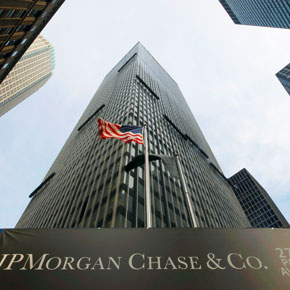NEW YORK | There are more than 20.000 market makers only in the US. Now one of them –a very, very big one, JP Morgan– has broken for the first time a code of silence among investment banks by revealing how much they rakes in as a market-maker. A market-maker quotes bid and offers prices for specific stocks or other securities that it holds. Its aim is to make money by taking advantage of the difference between bid and offer prices.
 Jes Staley, chief executive officer of JPMorgan’s investment bank, said he “opened the kimono” by breaking out the average revenue per trade the bank earned last year. In a ‘typical quarter’ the bank generates: $375 million from credit trading; $350 million from interest-rate swaps and foreign-exchange and futures trading; $325 million in cash equities produces about; and $300 million a quarter from asset backed securities. This includes only 70% of their trading revenue, excluding that tied to trading with other banks.
Jes Staley, chief executive officer of JPMorgan’s investment bank, said he “opened the kimono” by breaking out the average revenue per trade the bank earned last year. In a ‘typical quarter’ the bank generates: $375 million from credit trading; $350 million from interest-rate swaps and foreign-exchange and futures trading; $325 million in cash equities produces about; and $300 million a quarter from asset backed securities. This includes only 70% of their trading revenue, excluding that tied to trading with other banks.
Wall Street banks rarely do a breakdown of the makeup of this businesses, even if this market-making generate about a quarter of total revenue at the ‘big five’ US banks. Investment banks typically keep their trading tricks under wraps, as they
“usually bundle their 25 or more fixed income, currency and commodity products into just one revenue number, perhaps adding a little data-light color during earnings calls. Aside from that, all investors have to go on is trading desk gossip,” says Reuters
Why is JP Morgan making this move? Is it a smart one? This can make the firm the most hated kid on the block among other banks. Yet they may want to make sure the diversity of their operations is well understood by their investors.
Their new position may also be related to the much opposed by the banks Volcker rule. The bank could be sending a message to regulators by showing that they provide valuable services rather than trading for their own account only.
Part of the rule place severe limits on market making. According to it, market makers cannot hold a position in a security for an extended amount of time for its own inventory. Also, the market maker cannot enter into a position for its own profit –it must have a customer order.
Will now others in Wall Street follow JP Morgan’s transparency track? Here is a challenge.






Be the first to comment on "“Opening the kimono” of the US market-maker activity"